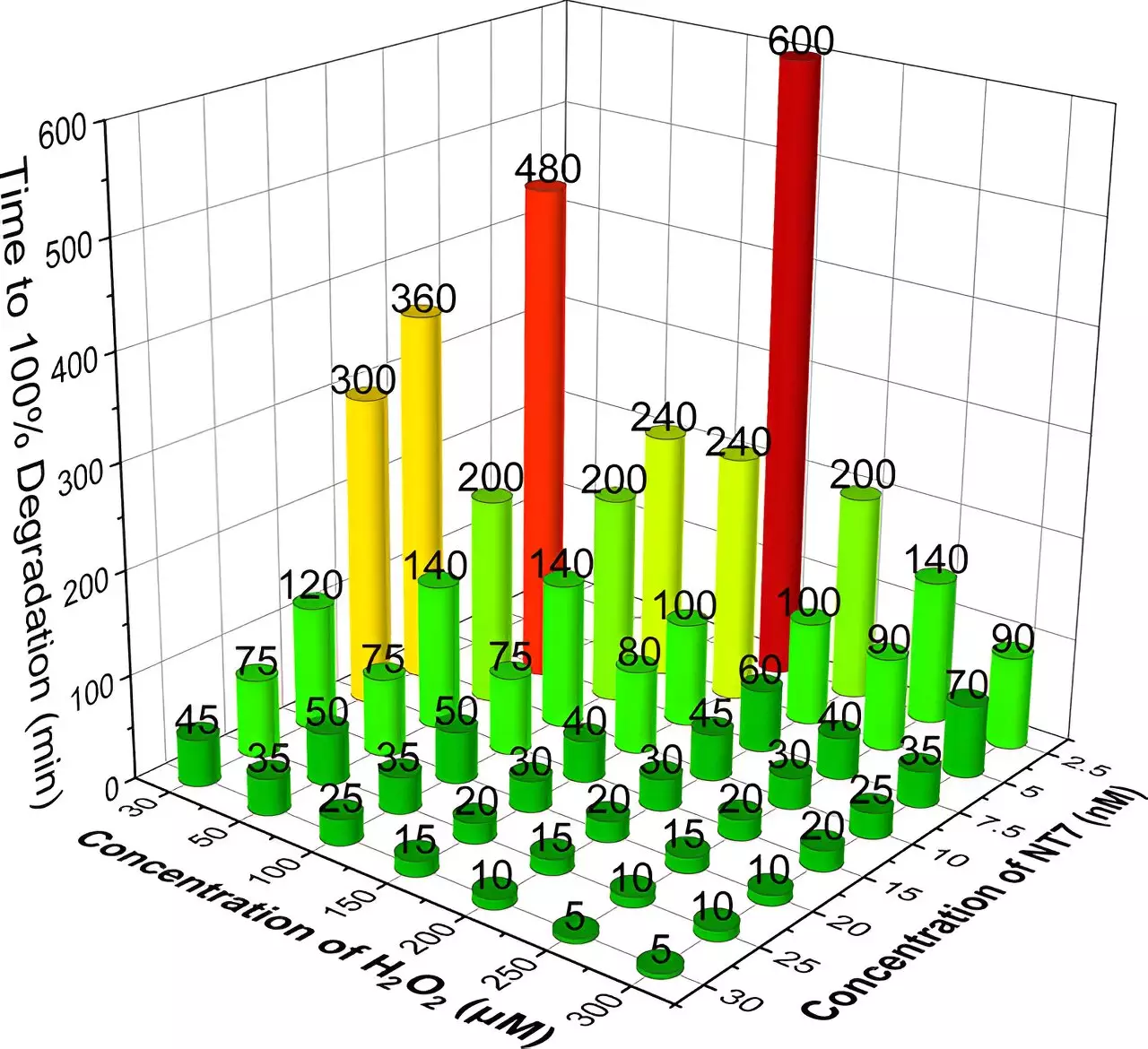In recent strides to address environmental pollution stemming from pharmaceuticals, researchers at Carnegie Mellon University have unveiled a groundbreaking water purification technique that utilizes a TAML catalyst in conjunction with hydrogen peroxide. This eco-friendly approach effectively degrades a variety of antibiotics and other pharmaceutical compounds commonly found in municipal wastewater as well as contaminated freshwater sources like rivers and lakes. These contaminants, often microscopic in nature, pose significant global environmental challenges, particularly as they infiltrate drinking water supplies.
Globally, over 4,000 prescription medications are utilized in both human and veterinary healthcare. However, a substantial quantity of these drugs eventually makes its way into the environment, creating serious health risks for wildlife and potentially humans as well. Pharmaceuticals can enter water systems through multiple pathways—be it through excretion, improper disposal, or other means. Traditional wastewater treatment facilities often fall short in completely removing these micropollutants during the purification process, leaving a toxic residual in water bodies. This lingering presence can disrupt ecological balance and adversely impact the behavior and health of various wildlife, including insects, fish, and birds.
Current water treatment technologies, which include advanced methods like ozonation and sorption onto activated carbon, often prove to be costly and complex, restricting their use to wealthier urban areas. Therefore, the need for an alternative approach that is both effective and affordable has never been more urgent.
Unveiling the TAML Catalyst: A Groundbreaking Innovation
At the heart of the Carnegie Mellon research is the next-generation TAML (Tetra-amido macrocyclic ligand) catalyst, specifically engineered to enhance the efficiency of hydrogen peroxide in degrading harmful substances. Terry Collins, the Teresa Heinz Professor of Green Chemistry and Director of the Institute for Green Science at Carnegie Mellon, emphasizes the remarkable advantages this catalyst offers. “Our process is achievable with very minimal concentrations of TAML and hydrogen peroxide,” Collins stated. This innovative characteristic not only ensures high efficacy in purification but also lowers operational costs, making it an attractive solution for water treatment facilities facing budget constraints.
Further studies conducted by the research team have detailed the ability of the TAML catalyst, dubbed NewTAML, to effectively degrade six pharmaceutical contaminants, including common antibiotics, a synthetic estrogen, and a nonsteroidal anti-inflammatory drug (NSAID). Initial tests involving laboratory water spiked with the drugs were followed by evaluations using real-world samples from municipal wastewater and natural freshwater bodies, demonstrating the catalyst’s versatility and efficiency across different contexts.
Exceptional Efficacy in Real-World Applications
The lab results are promising. In experiments, just minimal doses of NewTAML combined with diluted hydrogen peroxide showed remarkable success in breaking down pharmaceutical contaminants. Five out of six studied drugs were rendered undetectable following a treatment duration of around six hours, with the sixth exhibiting a 95.4% degradation rate. Such results reflect the substantial potential of TAML technology not just in urban wastewater settings but also in broader environmental applications.
Xiaowei Ma, a doctoral chemistry student involved in the research, illustrates the ease of application, stating the simplicity of the process: “Mix ultra-dilute TAML and diluted peroxide into contaminated waters and wait until the active pharmaceutical ingredients can no longer be detected.” This straightforward method stands in marked contrast to existing complex water treatment processes, showcasing TAML technology’s superior practicality.
Having established the efficacy of their innovative method, the Carnegie Mellon team is now looking toward field-testing in more diverse environments. The potential for commercial application is also taking shape; Sudoc, a startup with exclusive rights to the TAML technology, recently secured $20 million in funding to propel their systems into the European water treatment market. The dual intention of both purifying water and reducing pharmaceutical pollution can potentially facilitate broader environmental remediation efforts.
As global awareness of pharmaceutical pollution continues to rise, the implications of this research could ripple beyond water treatment, influencing policy, health-related practices, and environmental awareness. The TAML/hydrogen peroxide method not only represents a pivotal advancement in green chemistry but also stands as a beacon of hope in the quest for sustainable solutions to environmental contamination. With ongoing efforts to refine and deploy these technologies in real-world scenarios, the future of clean water could be significantly brighter.

